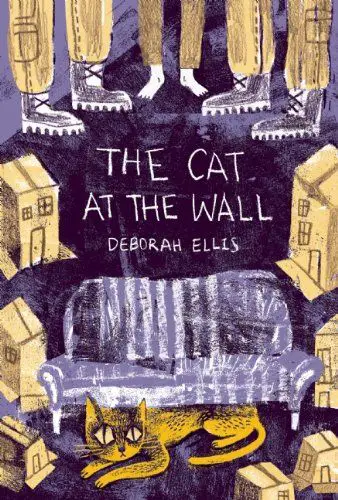A synoptic narrative depicts a single scene in which a character or characters are portrayed multiple times within a frame to convey that multiple actions are taking place. Synoptic is the adjective of synopsis.
The sequence of events in synoptic art is unclear.
Synoptic narratives typically provide visual cues that convey the sequence, but still might be difficult to decipher for those unfamiliar with the story.
There are 7 main categories of Narrative art. Narrative art is art which tells a story.
- Monoscenic — represents a single scene with no repetition of characters and only one action taking place
- Sequential — very much like a continuous narrative with one major difference. The artist makes use of frames. Each frame is a particular scene during a particular moment.
- Continuous —Continuous narrative art gives clues, provided by the layout itself, about a sequence. Sequential narrative without the frames.
- Synoptic — offers the synopsis of a bigger story. You must already know a story before you can make temporal sense of synoptic narrative.
- Simultaneous — has very little visually discernible organisation unless the viewer is acquainted with its purpose. There’s an emphasis on repeatable patterns.
- Panoptic — depicts multiple scenes and actions without the repetition of characters. Think of the word ‘panorama’. ‘All-seeing’ (pan + optic)
- Progressive — a single scene in which characters do not repeat. However, multiple actions are taking place in order to convey a passing of time in the narrative. A progressive narrative is not to be interpreted as a group of simultaneous events but rather a sequence that is dependent on its location. Actions displayed by characters in the narratives compact present and future action into a single image.
Synoptic is the adjectival form of ‘synopsis’, which should give us a clue about what’s going on. Synoptic art = the synopsis of a bigger story.
If you watch the news, at least on Australian ABC, the weather announcer talks about a synoptic weather chart each night. A synoptic weather chart is any map that summarises atmospheric conditions (temperature , precipitation , wind speed and direction, atmospheric pressure and cloud coverage) over a wide area at a given time.
Reading synoptic weather charts is a learned skill: How To Read Synoptic Weather Charts. We learn that the circular lines are isobars, that their distance apart tells us how windy it is, and so on and so forth.
Likewise, reading synoptic narrative art is a learned skill.
You can find examples of synoptic narrative art in ancient murals. The viewers of these murals knew the plots of these stories already. The art simply triggered their memories of a familiar story. Everyone of the era understood the basic plot of the myths, fables, legends and wars depicted.
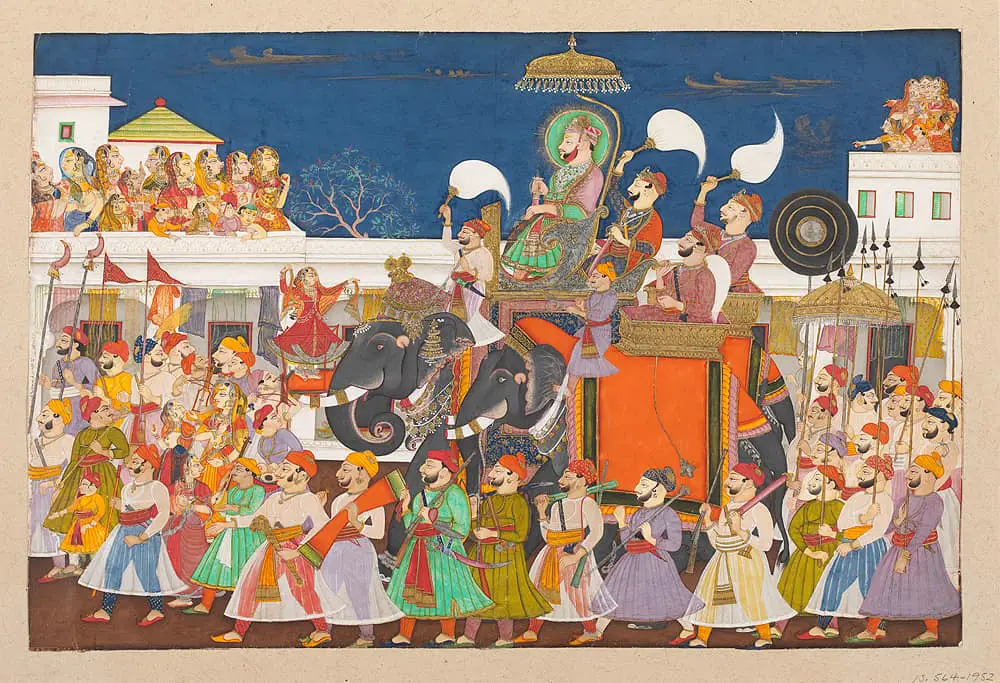
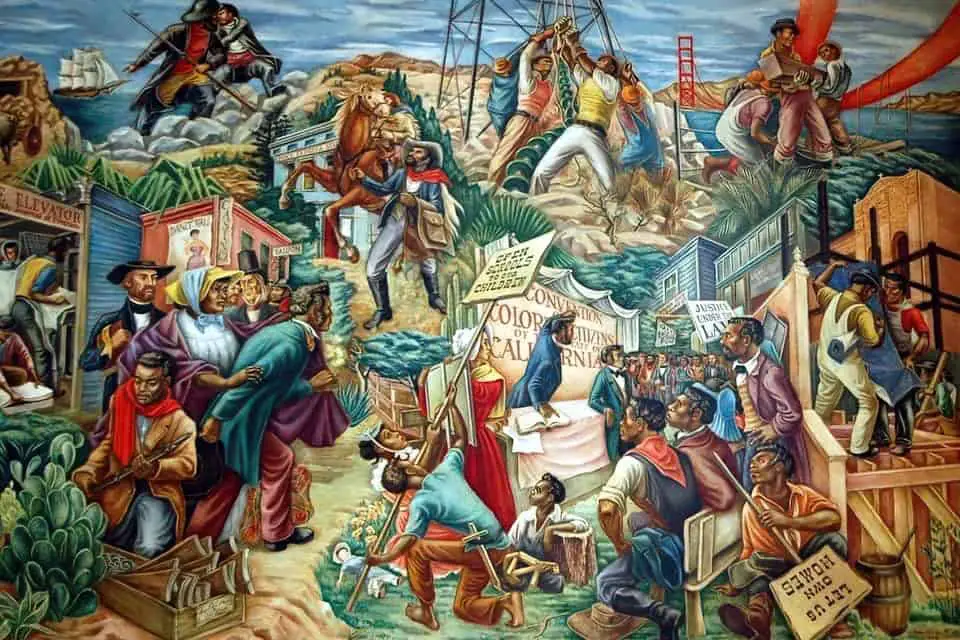
(It would be unusual to find a painting like the one above in a modern, Western picture book because the characters are facing the wrong way! In picture books, the action goes toward the page turn, unless there’s some unusual reason to reverse it.)
In picture books the best place to find synoptic artwork is in encyclopaedias and bowdlerised histories. There is a series of Kingfisher encyclopedias featuring synoptic artwork on the covers. Below, the reader has to know the timeline of history before understanding how these pictures relate to each other.
Most versions of children’s Bibles take a single scene and use that as the cover illustration. Noah and Moses are particularly popular. But sometimes the cover artist decides to take a whole bunch of scenes from different periods of Biblical history and amalgamate them into a ‘single’ setting.
Speaking of Noah’s Ark, are we really to believe that Noah marched all of those animals onto the ark at once? I believe the story — and therefore the illustrations of Noah’s ark are themselves synoptic, compressing different scenes: first he put the camels on the ark, the next day he might have put the elephants on… and so on. Yet almost every illustration of Noah’s Ark shows us that all the animals boarded the boat at the same time.
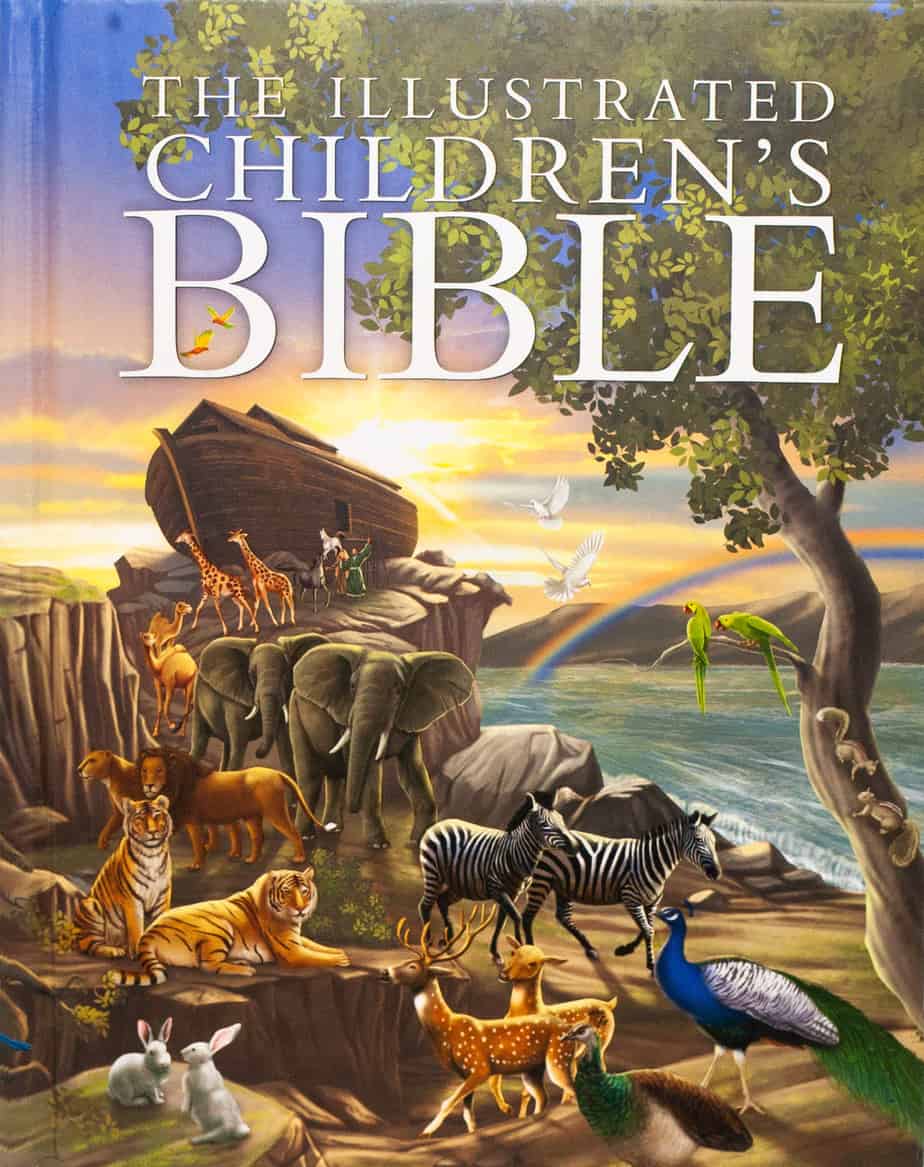
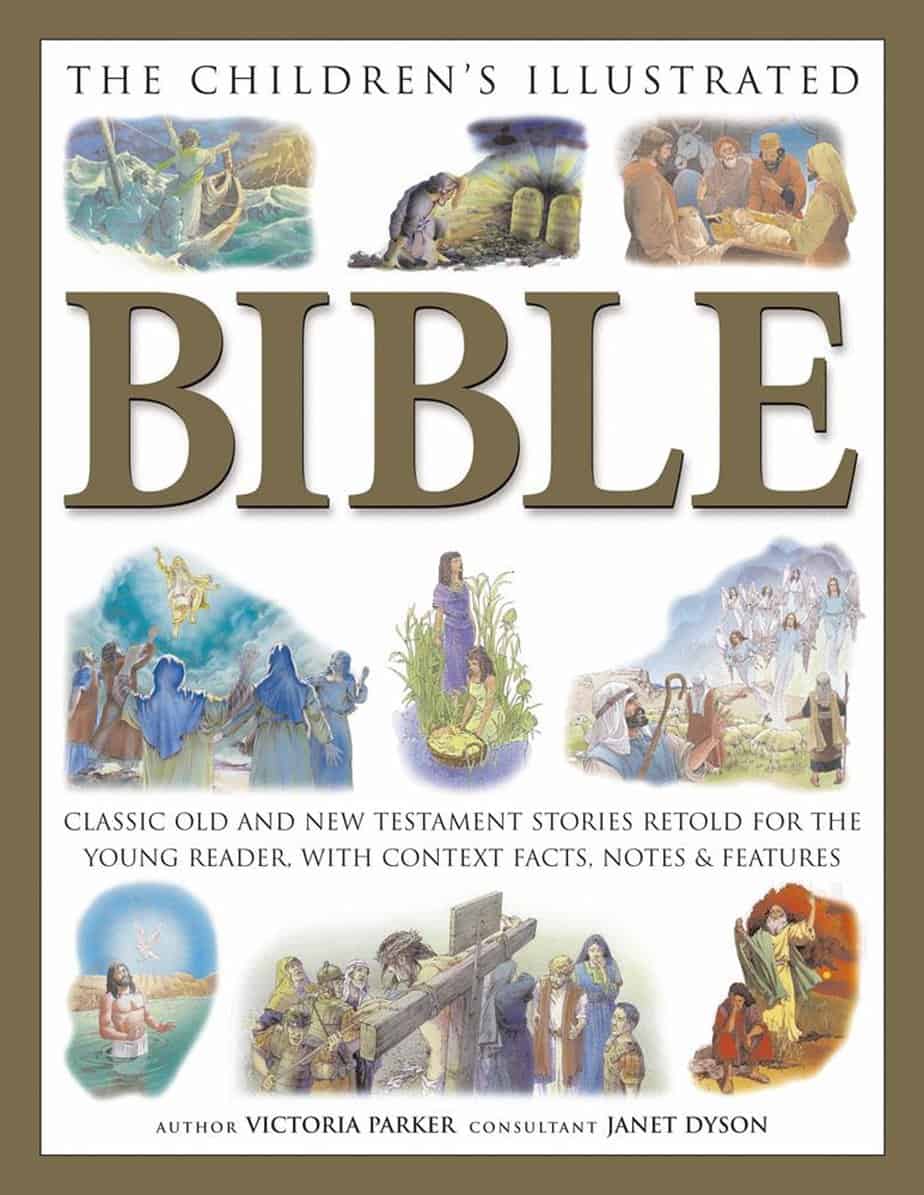
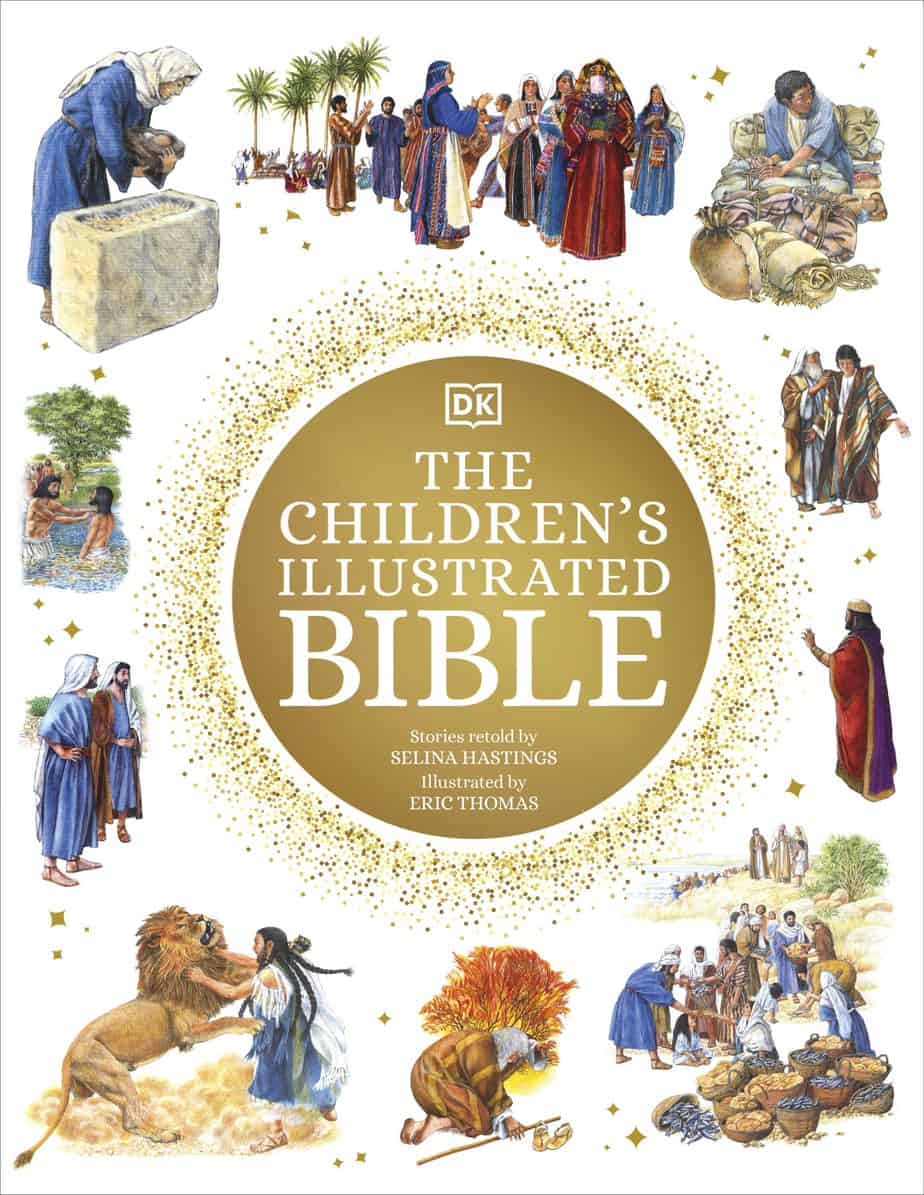
The text on its own doesn’t suggest the animals boarded the ark at once:
“Bring a pair of every kind of animal—a male and a female—into the boat with you to keep them alive during the flood. Pairs of every kind of bird, and every kind of animal, and every kind of small animal that scurries along the ground, will come to you to be kept alive. And be sure to take on board enough food for your family and for all the animals.” (Gen. 6:19-21)
However, when children see illustrations of animals such as that above, we all get the idea that in the story of Noah’s Ark, the animals resembled middle-aged tourists getting onto a cruiser. It’s also worth noting that Noah was never told to gather the animals. He was only commanded to build an ark. It could’ve been people working for him who actually put the animals on the ark.
Whereas I read the story of Noah’s Ark as metaphor, adults hoping to teach children a literal reading of the Bible should take note of the extent to which illustrators synoptically abbreviate stories in order to create interesting visuals, thereby affecting everyone’s understanding of events.
This cover illustration of a fairytale collection places images from different fairytales together. Each story presumably takes place at a separate time within a fictional history of fairies, but each of these scenes takes place within the same fairytale world.
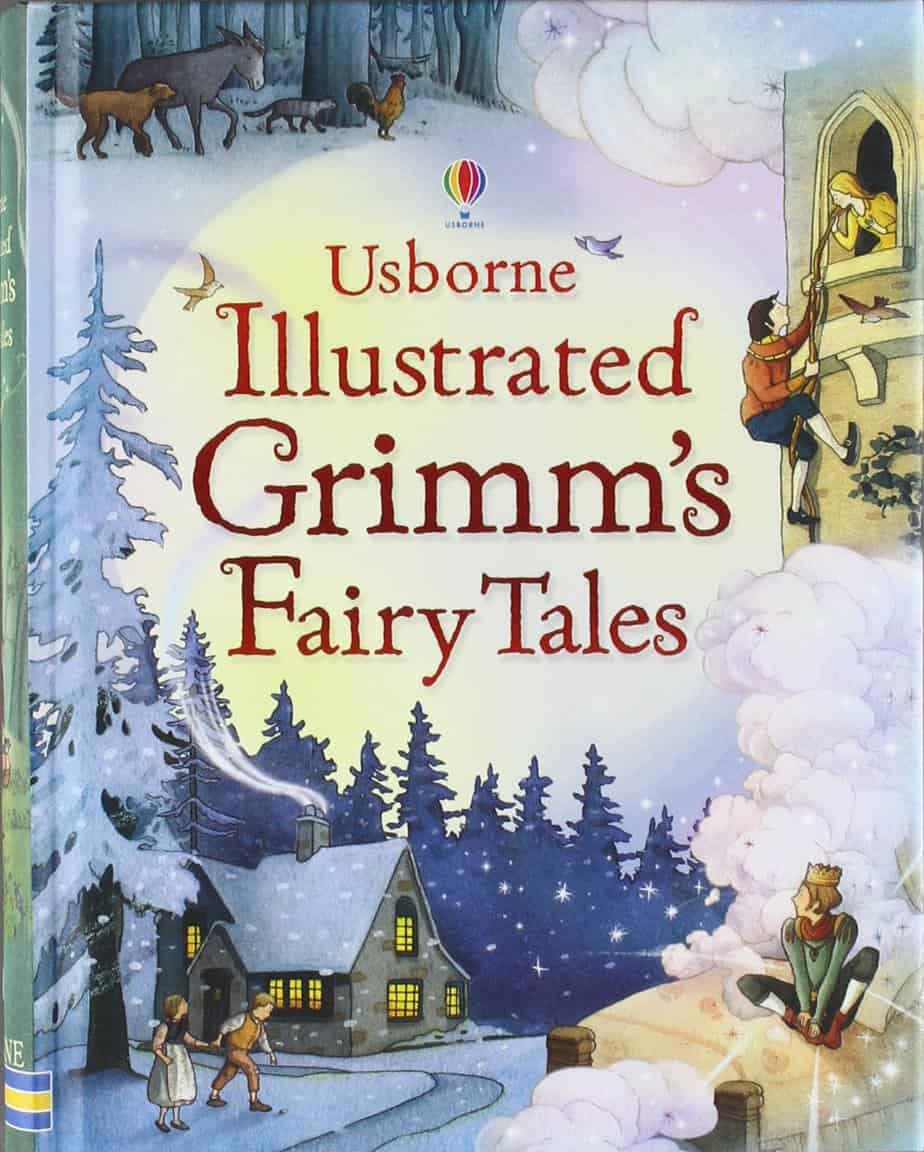
THE DIFFERENCE BETWEEN CONTINUOUS AND SYNOPTIC NARRATIVE ART
Continuous narrative art gives you clues, provided by the layout itself, about the sequence of scenes depicted.
In synoptic narrative art you have to know the story before you can understand the plot sequence.
Is the image below an example of synoptic art? “These are all the things you do in the garden, and here are the tools to help you.” Clearly this is mostly the same man and woman repeated.

What about the gardeners below? Are they the same person on different day?
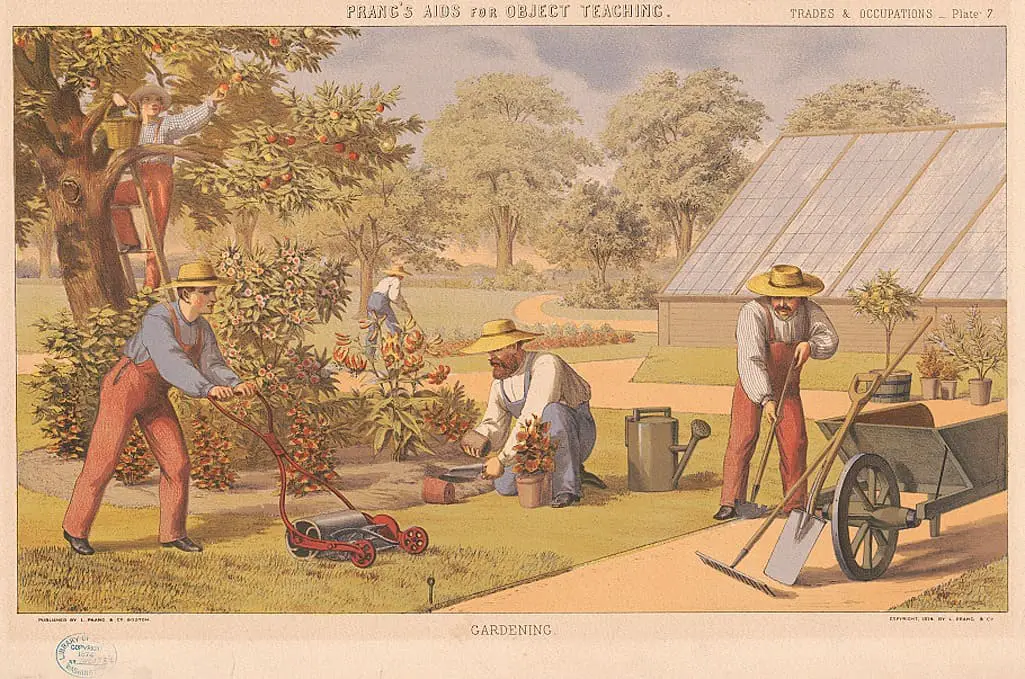
Synoptic Narrative In Film Noir Posters
In the film noir poster below, you can see synoptic narrative compressed within the smoke of the candle. Unless you’ve seen the film you don’t know the storyline, though presumably afterwards the images make sense. The point of a movie poster is to encourage people to pay for the ticket, which explains why we aren’t given too many clues about the story before going in.
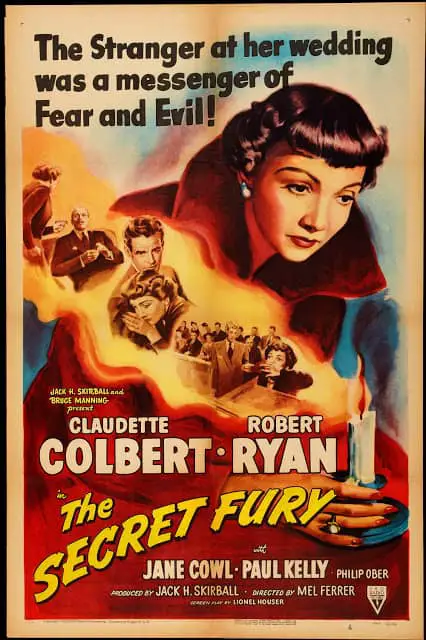
Synoptic art can also be seen in more literary book covers. The cover is designed to give some idea of what’s going on inside the book, and the illustrator takes a selection of images and arranges them on the page according to aesthetics rather than temporal sequence.
On Israel’s West Bank, a cat sneaks into a small Palestinian house that has just been commandeered by two Israeli soldiers. The house seems empty, until the cat realises that a little boy is hiding beneath the floorboards.
Should she help him?
After all, she’s just a cat.
Or is she?
advertising copy of The Cat At The Wall
